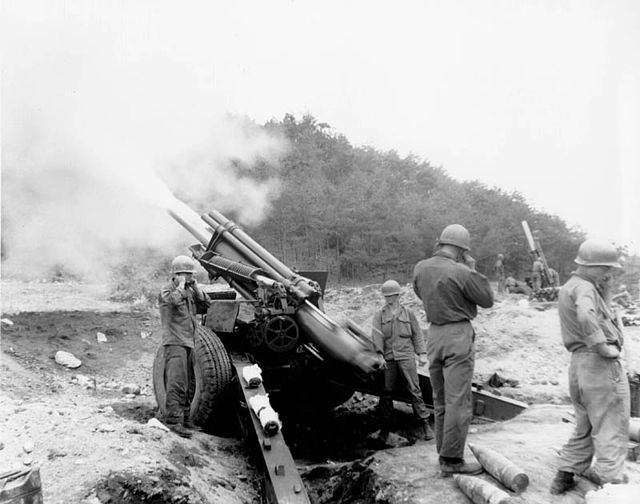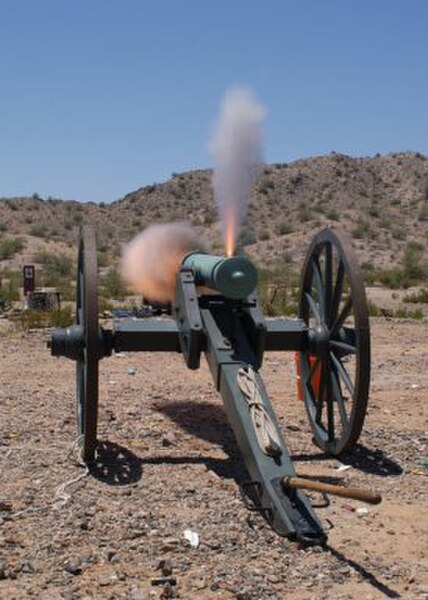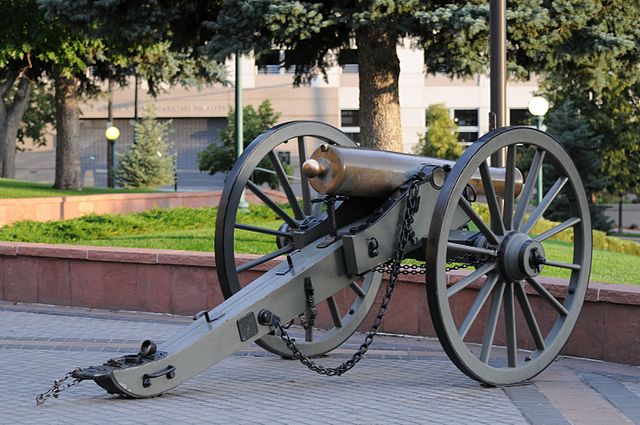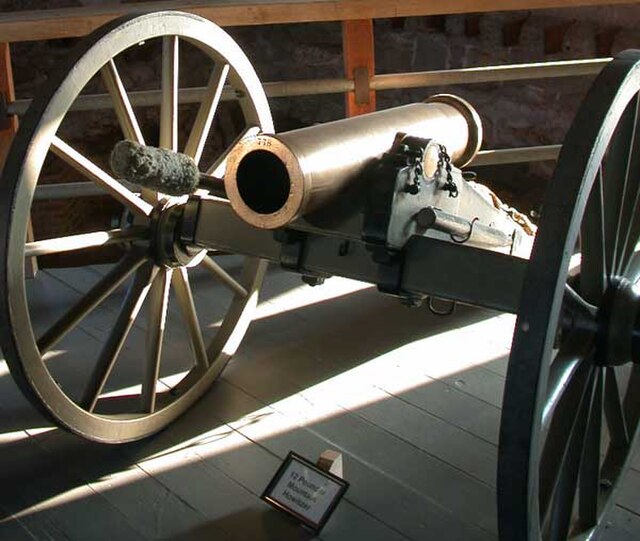152 mm howitzer M1943 (D-1)
The D-1 howitzer M1943 is a Soviet World War II-era 152.4 mm howitzer. The gun was developed by the design bureau headed by F. F. Petrov in 1942 and 1943, based on the carriage of the 122 mm howitzer M1938 (M-30) and using the barrel of the 152 mm howitzer M1938 (M-10). The powerful and mobile D-1, with its wide range of ammunition, significantly increased the firepower and breakthrough abilities of Red Army tank and motor rifle formations. Several hundred D-1s were manufactured before the end of World War II.
152 mm howitzer M1943 (D-1)
Components of D-1 howitzer: 1 – split trails 2 – breachblock 3 – gunshield 4 – recoil devices (buffer and recuperator) 5 – barrel 6 – muzzle brake 7 – wheels 8 – suspension Parts 1, 7 and 8 belong to the carriage; 2, 4, 5 and 6 make the barrel group
Recoil devices
Muzzle brake
The howitzer is an artillery weapon that falls between a cannon and a mortar. It is generally aimed lower than a mortar but higher than a cannon. With their long-range capabilities, howitzers can be used to great effect in a battery formation with other artillery pieces, such as long-barreled guns, mortars, and rocket artillery.
Firing of an M114 155 mm howitzer by the 90th Field Artillery Battalion, US 24th Infantry Division, during the Korean War
Mountain howitzer firing
12-pound Napoleon at the Colorado State Capitol
Nineteenth-century 12-pounder (5 kg) mountain howitzer displayed by the National Park Service at Fort Laramie in Wyoming, United States








